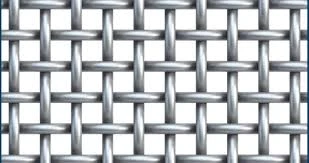-
+86 15030157877
-
sales@galvanizedmetalmesh.com
Ağu . 09, 2024 18:50 Back to list
Effective Solutions for Durable and Reliable Cattle Fencing to Ensure Livestock Safety and Security
High-Quality Cattle Fencing Essential for Livestock Management
In the world of agriculture, the importance of high-quality cattle fencing cannot be overstated. Proper fencing not only ensures the safety and security of cattle but also plays a critical role in efficient livestock management. Let's delve into the various aspects that underscore the necessity and benefits of investing in superior fencing solutions for cattle.
Why High-Quality Fencing Matters
Cattle are valuable assets for farmers, and keeping them safe is a top priority. High-quality fencing acts as a reliable barrier, protecting livestock from predators and preventing them from straying onto roads or neighboring properties. This is crucial in avoiding accidents that could lead to injury or even loss of life, both for the cattle and for drivers on adjacent roads. Moreover, a sturdy fence minimizes the likelihood of theft, ensuring that farmers can safeguard their investment.
Another important aspect of high-quality cattle fencing is its ability to manage grazing effectively. Properly designed and installed fences allow farmers to control animal movement within pastures. This rotational grazing increases the health of the land by preventing overgrazing in any particular area, thereby promoting regrowth and enhancing soil quality. Additionally, it ensures that cattle have access to fresh pasture, which is vital for their health and productivity.
Key Features of High-Quality Cattle Fencing
1. Durability Cattle fencing must withstand various environmental conditions, including intense sun, heavy rains, and freezing temperatures. High-quality materials such as galvanized steel, wood treated with protective chemicals, or high-tensile wire are essential for long-lasting performance.
high quality cattle fencing

2. Height and Spacing The design of the fence should consider the breed of cattle being contained. Typically, a fence height of at least 5 to 6 feet is adequate to prevent cattle from jumping over. Additionally, the spacing between wires or boards should be wide enough to deter cattle from getting their heads stuck but close enough to prevent escapes.
3. Visibility Cattle tend to respond better to visible fencing. Incorporating elements like colored wire or reflective markers can help them recognize the boundary. This not only reduces the chances of them colliding with the fence but also facilitates easier monitoring by farmers.
4. Maintenance High-quality fencing should require minimal maintenance. However, regular inspections and timely repairs are crucial to ensure that any wear and tear are addressed before they become major issues. Choosing materials that resist rust, rot, and corrosion can significantly reduce maintenance efforts.
Types of Cattle Fencing
Several fencing options are available, each with its advantages and disadvantages. Barbed wire fencing is commonly used due to its cost-effectiveness and strength, but it may pose risks of injury to livestock. Electric fencing is another popular choice as it provides a strong psychological barrier that keeps cattle within designated areas without the need for physical barriers. Stock fencing, which consists of tightly woven wire to contain smaller animals, can also be effective for mixed livestock farms.
Conclusion
Investing in high-quality cattle fencing is not just a matter of convenience; it is an essential aspect of responsible livestock management. The right fencing provides security, promotes optimal grazing practices, and safeguards both cattle and the surrounding environment. For farmers looking to protect their investments while ensuring the welfare of their animals, high-quality fencing is undoubtedly a wise choice that pays dividends in the long run. Remember, a well-fenced farm is a productive farm, fostering both the health of the cattle and the viability of the agricultural enterprise.
-
High Quality 3D Curved Welded Wire Mesh Fence for Security and Aesthetics
NewsJul.25,2025
-
High-Quality Security Window Screen Mesh for Home & Office Protection
NewsJul.24,2025
-
Hexagonal Gabion for River Bank Protection and Retaining Walls
NewsJul.23,2025
-
High Quality Stainless Steel Wire Mesh Roll & Supplier Wholesale Price
NewsJul.22,2025
-
Hexagonal Gabion Mesh: Durable Stone Cages for Landscaping
NewsJul.22,2025
-
Premium Black Brick Welded Mesh - High Strength & Corrosion Resistant
NewsJul.21,2025



